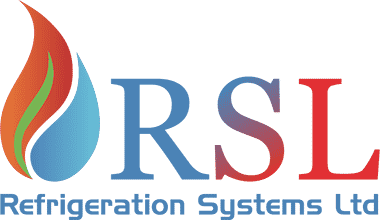
You shouldn’t have to give up comfort or drain your wallet to keep your residence at a refreshing temperature during the summer.
But what is the best temperature, exactly? We go over suggestions from energy professionals so you can determine the best setting for your home.
Here’s what we recommend for the most energy-efficient setting for air conditioning in Richmond.
Recommended Thermostat Settings for Summer
Most families find setting the thermostat at 72-73 degrees is most comfortable. However, if there’s a big difference between your inside and outside temperatures, your cooling bills will be higher.
This is our advice based on the U.S. Department of Energy (DOE) and ENERGY STAR®.
While at home: 78 degrees. While that appears hot, there are approaches you can keep your residence refreshing without having the AC on constantly.
Keeping windows and curtains down during the day keeps chilled air where it needs to be—indoors. Some window solutions, such as honeycomb shades or plantation shutters, are designed to provide added insulation and improved energy conservation.
If you have ceiling fans in your home, the DOE says you can move thermostat temps about 4 degrees hotter without compromising comfort. That’s due to the fact they refresh through a windchill effect. As they cool people, not areas, turn them off when you leave a room.
If 78 degrees still seems too hot on the surface, try running a trial for approximately a week. Begin by upping your setting to 78 degrees while you’re home. Then, progressively turn it down while adhering to the advice above. You may be shocked at how comfortable you feel at a hotter temperature setting.
While away: 88 degrees. There’s no rationale for keeping the AC working all day while your home is vacant. Moving the setting 7–10 degrees warmer can save you as much as 5–15% on your electrical bills, according to the DOE.
When you come home, don’t be tempted to put your thermostat colder than 78 to cool your home faster. This isn’t productive and often leads to a higher air conditioner bill.
A programmable thermostat is a good way to keep your temperature under control, but you have to set programs. If you don’t utilize programs, you might forget to change the set temperature when you take off.
If you need a convenient fix, think over buying a smart thermostat. This thermostat works with with your phone, so it is aware when you’re at home and when you’re out. Then it intuitively adjusts temperature settings for the biggest savings. How much exactly? Usually $180 annually on heating and cooling, according to ENERGY STAR.
Another plus of installing a smart thermostat? You can use your phone to watch and adjust temperature settings from just about anywhere.
While sleeping: Around 70 degrees. While ENERGY STAR suggests 82 degrees, that may be unbearable for most families. Many people sleep better when their sleeping area is cold, so that’s why the National Sleep Foundation suggests 60–67 degrees. But that might be too cool, based on your clothing and blanket preference.
We recommend running a comparable test over a week, putting your temp higher and gradually lowering it to choose the right setting for your house. On mild nights, you could learn keeping windows open at night and running a ceiling fan is a superior option than operating the AC.
More Ways to Save Energy This Summer
There are additional approaches you can save money on AC bills throughout warm weather.
- Upgrade to an energy-efficient AC system. Central air conditioners only work for about 12–15 years and become less efficient as they get older. An upgraded air conditioner can keep your residence more comfortable while keeping energy costs down.
- Schedule yearly air conditioner maintenance. Annual air conditioner maintenance keeps your equipment operating like it should and might help it run at better efficiency. It might also help lengthen its life expectancy, since it allows pros to spot little problems before they lead to a major meltdown.
- Switch air filters regularly. Follow manufacturer instructions for switching your air filter. A dusty filter can result in your system short cycling, or switch on and off too often, and raise your utility.
- Check attic insulation levels. Just about 90% of homes in the USA don’t have proper insulation, according to the Insulation Institute. Most southern climates should have 13–14” of attic insulation, while northern climates need 16–18”.
- Have your ductwork examined. Ductwork that has come apart over time can let conditioned air into your attic, walls or crawl space. This can result in huge comfort problems in your residence, such as hot and cold spots.
- Seal cracks, doors and windows. Keep hot air where it belongs by sealing openings. You can also caulk or weather strip doors to keep more conditioned air indoors.
Save More Energy This Summer with Refrigeration Systems Ltd.
If you want to use less energy this summer, our Refrigeration Systems Ltd. pros can assist you. Get in touch with us at 778-693-2532 or contact us online for extra info about our energy-saving cooling solutions.
